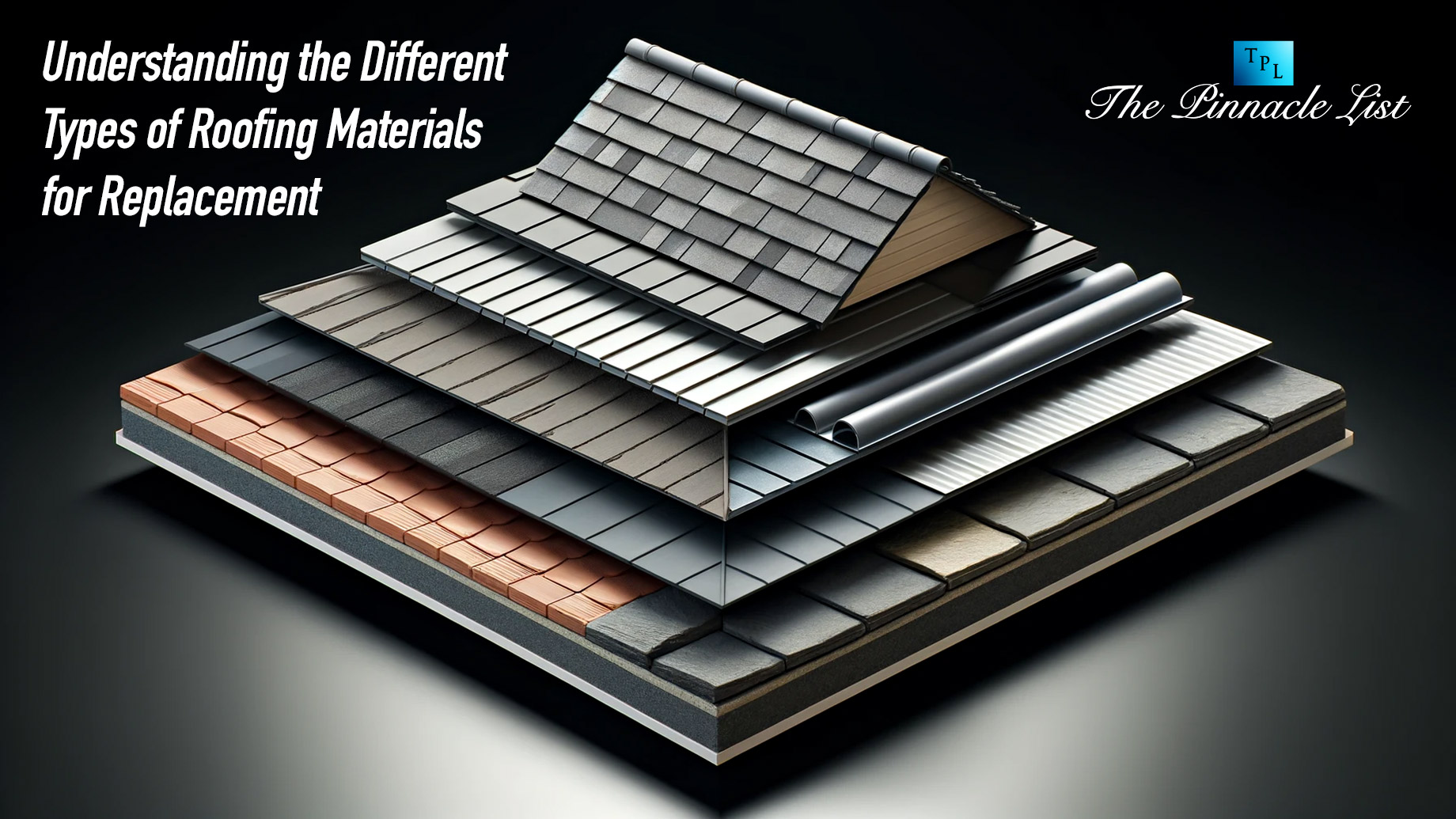
The roof is like a sentinel, watching over our houses through thick and thin, protecting us from the elements every single day. Despite its steadfast commitment to protection, the roof is frequently overlooked until visible signs of damage emerge. When the time comes to replace a roof, homeowners are faced with a plethora of options, each with its own distinct set of features and factors to think about. If you want to make an educated choice that improves the home’s aesthetics and value while also meeting practical needs, you need to know about the many different roofing materials that are available for replacement.
In this all-inclusive guide, we’ll delve into the world of roofing materials, learning about each one’s unique pros, cons, uses, and subtleties. A wide variety of roofing materials are available, each with its own unique combination of longevity, aesthetic appeal, and durability. These materials range from modern innovations to age-old classics. Understanding the complexities of roofing materials allows homeowners to confidently choose a material that enhances their home’s curb appeal, resale value, and protection from the elements.
Various Rooftop Material Options
1. Asphalt Shingles
- Thanks to their low price, adaptability, and ease of installation, asphalt shingles have become the most popular roofing material in North America.
- Asphalt shingles provide homeowners a lot of leeway to personalize their roof to their liking by offering a wide variety of colors, styles, and designs.
2. Metal Shingles
- Metal roofing’s great longevity, energy efficiency, and low maintenance needs have contributed to its meteoric rise in popularity over the past few years.
- Metal roofing, which can be made from a variety of materials including steel, aluminum, and copper, provides long-term protection for the home by offering superior resistance to fire, wind, hail, and impact damage.
3. Wood Shingles and Shakes
- Wood shingles and shakes are a classic choice for any home’s roof because of the natural beauty and warmth they provide to the structure.
- Although wood roofing requires more upkeep than other materials, it provides natural insulation and has an unmatched visual appeal, making a space feel more inviting.
4. Slate Roofing
- With its unique look and unmatched durability, slate roofing embodies refinement and opulence.
- Natural slate roofing is the best option for homeowners who want their roof to last because it is extremely long-lasting and resistant to fire, water, insects, and ultraviolet light.
5. Tiles Made of Clay and Concrete
- Tiles made of clay and concrete exude an air of timeless sophistication that can elevate any building design to a Mediterranean level.
- Contrasted with the classic beauty and long-lasting durability of clay tiles, concrete tiles offer a more budget-friendly option that offers all the same advantages, such as resistance to fire and severe weather.
6. Materials for Synthetic Roofs
- A more sustainable and economical option to more conventional roofing materials are synthetic ones, which include rubber, plastic, and composites.
- These cutting-edge materials provide improved longevity, weather resistance, and durability while mimicking the appearance and feel of natural materials. This makes them a great choice for eco-conscious homeowners looking for sustainable solutions.
Things to Think About When Choosing a Roof Material
- Weather: When choosing a roofing material, take into account the local climate and current weather conditions. Some materials might be more resistant to things like high winds, heavy rain, or long periods of exposure to UV rays.
- Aesthetic Considerations: Pick a roof material that goes well with your home’s design and architecture. Making sure the roof blends in with the rest of the property’s design and personality requires careful consideration of details like color, texture, shape, and profile.
- Budget: Determine your budget for the roof replacement project and select a material that aligns with your financial parameters. While it may be tempting to opt for the cheapest option upfront, it’s essential to consider the long-term savings and return on investment. Investing in high-quality roofing material, such as those offered by experts like https://rooftechconstruction.com/, may result in greater durability, longevity, and energy efficiency, ultimately saving you money in the long run.
- Longevity: Consider your long-term goals for the property when deciding between different roofing materials, and take their predicted lifespans into account. If you want your investment to last and produce results for a long time, you should think about the material’s expected lifespan and any manufacturer warranties or guarantees.
In Summary
Finally, it’s important to take your time and think things through when deciding on a roofing material for a replacement project. Roofing materials come in a wide variety of styles and colors, each with its own set of benefits and drawbacks. Homeowners can make an educated decision that suits their needs and tastes by learning about the many options available to them. Roofing materials can greatly impact a home’s curb appeal, practicality, and value. From the classic versatility of asphalt shingles to the modern durability of metal, there is a wide range of options to choose from. If a homeowner needs help understanding all the options for roofing materials and how to choose the right one for their home, contact us today to begin the process of installing a roof that is long-lasting, beautiful, and safe.